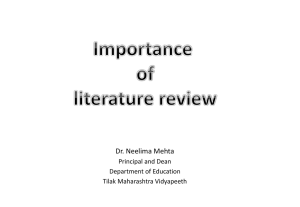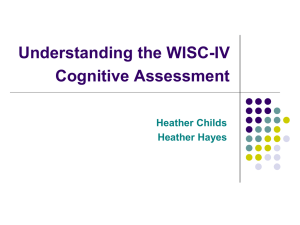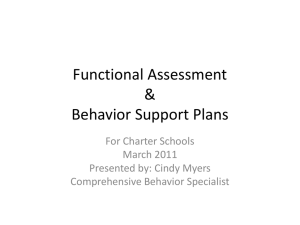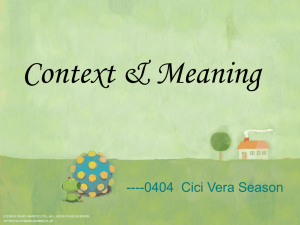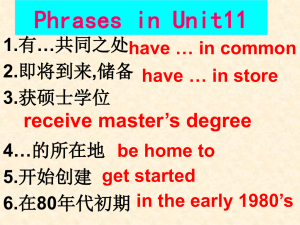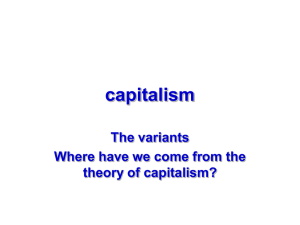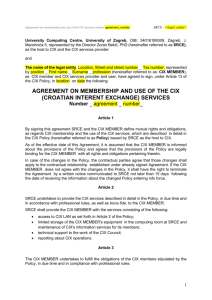RIAS-WISC-4-FASP - My School Psychology
advertisement
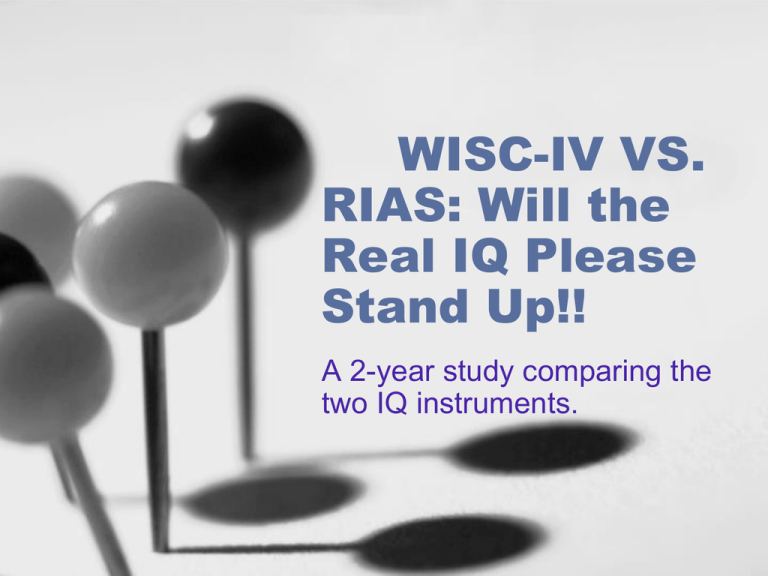
WISC-IV VS. RIAS: Will the Real IQ Please Stand Up!! A 2-year study comparing the two IQ instruments. HYPOTHESIS • RESEARCHER HYPOTHESIZED THAT THE RIAS WOULD SCORE HIGHER GIVEN THE ADDITIONAL PSYCHOMOTOR PROCESSING AND WORKING MEMORY FACTORS ON THE WISC-IV. • PLEASE REFER TO THE GAI DATA AND SUPPLENTAL TABLES FOR WISC-IV UPDATES. • ADDITIONALLY, BOTH INSTRUMENTS MEASURE DIFFERENT CONSTRUCTS. THEREFORE, WE ARE MEASURING SIMILAR YET DIFFERENT ASPECTS OF COGNITION. “SQUARE FEET VS. CUBIC FEET” THINKING. WISC and RIAS Verbal Comparisons • WISC • 3 Subtests • RIAS • 2 Subtests • General fund of knowledge • Verbal associative reasoning • Vocabulary – expressive language • Moral judgment, common sense, independent thinking • General fund of knowledge • Verbal associative reasoning • Vocabulary – oneword responses WISC and RIAS Comparisons Performance IQ • WISC • 3 Subtests • Nonverbal associative and categorical reasoning • Analyze and synthesize abstract visual information • RIAS • 2 Subtests • Nonverbal associative and categorical reasoning • Deduce essential elements missing in pictures from gestalt WISC and RIAS Comparisons – Working Memory • WISC • 2 Subtests measuring attention, concentration, sequencing, and short-term auditory memory • RIAS • 0 Subtests • Not part of the CIX WISC and RIAS Comparisons – Processing Speed • WISC • 2 Subtests • RIAS • 0 Subtests • Graphomotor processing speed involving timed paper and pencil tasks • Visual-motor coordination • Concentration and visual memory • Timed nonverbal tasks involving cognitive efficiency and speed w/o paper and pencil DESIGN Random Select Selection • Select ‘fine’ Psychologists from St. Johns County school district randomly selected students ranging from 6-16 years of age and administered both the WISC-IV and RIAS IQ instruments. All students were referred by the CST. • Abundance of data from the 200506 SY. Psychologists gave raw data to researcher to tabulate. DESIGN • ONLY THE AGE OF THE STUDENTS WAS USED AS “PREDICTOR VARIABLE.” AGES RANGED FROM 6-16. MAJORITY OF STUDENTS WERE IN THE 7 YR. OLD THROUGH 10 YR. OLD RANGE. RACE AND GENDER NOT USED FOR COMPARISONS GIVEN LIMITED NUMBER • Only less than a handful of minority African American and Hispanics tested. • Gender not a major contributing factor on how data is to be used. Pearson Correlation Coefficient • The Full Scale IQ’s and the Factor Scores will be compared to check for correlation coefficients. • WESSA.NET was used as the software program to calculate Pearson Product Moment Correlation Coefficients. TOTAL N = 121 BREAKDOWN BY AGE N = Number • 6 YEAR OLDS 09 • 7 YEAR OLDS 18 • 8 YEAR OLDS 33 • 9 YEAR OLDS 32 • 10 YEAR OLDS 18 • 11 YEAR OLDS 02 • 12 YEAR OLDS 02 • 13 – 16 YEAR OLDS 07 ___________________________________ TOTAL SAMPLE N = 121 Standard score Age 6 (9 students) 131 130 129 128 127 126 125 124 123 122 121 120 119 118 117 116 115 114 113 112 111 110 109 108 107 106 105 104 103 102 101 100 99 98 97 96 95 94 93 92 91 90 89 88 87 86 85 84 83 82 81 80 79 78 77 76 75 74 73 72 71 70 69 68 67 66 65 64 63 62 61 60 59 58 57 56 55 54 53 52 51 50 49 48 47 46 45 44 43 42 41 40 124 126 110 103 97 97 94 90 89 88 86 73 VIQ PIQ WM PS FSIQ FSIQ Low FSIQ High WISC 97 94 88 89 90 73 124 RIAS 97 110 103 86 126 Mean Factor Scores Standard score Age 7 (18 students) 139 138 137 136 135 134 133 132 131 130 129 128 127 126 125 124 123 122 121 120 119 118 117 116 115 114 113 112 111 110 109 108 107 106 105 104 103 102 101 100 99 98 97 96 95 94 93 92 91 90 89 88 87 86 85 84 83 82 81 80 79 78 77 76 75 74 73 72 71 70 69 68 67 66 65 64 63 62 61 60 135 121 99 105 104 106 106 99 97 92 85 71 VIQ PIQ WM PS FSIQ FSIQ Low FSIQ High WISC 99 106 92 97 99 71 121 RIAS 104 106 105 85 135 Mean Factor Scores Standard score Age 8 (33 students) 133 132 131 130 129 128 127 126 125 124 123 122 121 120 119 118 117 116 115 114 113 112 111 110 109 108 107 106 105 104 103 102 101 100 99 98 97 96 95 94 93 92 91 90 89 88 87 86 85 84 83 82 81 80 79 78 77 76 75 74 73 72 71 70 69 68 67 66 65 64 63 62 61 60 127 129 107 103 99 96 105 92 94 91 89 75 VIQ PIQ WM PS FSIQ FSIQ Low FSIQ High WISC 99 96 92 91 94 75 127 RIAS 103 107 105 89 129 Mean Factor Scores Standard score Age 9 (32 students) 132 131 130 129 128 127 126 125 124 123 122 121 120 119 118 117 116 115 114 113 112 111 110 109 108 107 106 105 104 103 102 101 100 99 98 97 96 95 94 93 92 91 90 89 88 87 86 85 84 83 82 81 80 79 78 77 76 75 74 73 72 71 70 69 68 67 66 65 64 63 62 61 60 128 128 101 101 99 103 102 96 94 91 79 71 VIQ PIQ WM PS FSIQ FSIQ Low FSIQ High WISC 99 101 91 94 96 71 128 RIAS 101 103 102 79 128 Mean Factor Scores Standard score Age 10 (18 students) 123 122 121 120 119 118 117 116 115 114 113 112 111 110 109 108 107 106 105 104 103 102 101 100 99 98 97 96 95 94 93 92 91 90 89 88 87 86 85 84 83 82 81 80 79 78 77 76 75 74 73 72 71 70 69 68 67 66 65 64 63 62 61 60 59 58 57 56 55 54 53 52 51 50 49 48 47 46 45 44 43 42 41 40 119 102 92 93 90 102 97 90 87 84 45 40 VIQ PIQ WM PS FSIQ FSIQ Low FSIQ High WISC 90 93 90 84 87 45 102 RIAS 92 102 97 40 119 Mean Factor Scores Standard score Ages 11 thru 16 (11 students) 128 127 126 125 124 123 122 121 120 119 118 117 116 115 114 113 112 111 110 109 108 107 106 105 104 103 102 101 100 99 98 97 96 95 94 93 92 91 90 89 88 87 86 85 84 83 82 81 80 79 78 77 76 75 74 73 72 71 70 69 68 67 66 65 64 63 62 61 60 124 104 93 92 91 84 82 80 76 76 63 61 VIQ PIQ WM PS FSIQ FSIQ Low FSIQ High WISC 84 80 76 82 76 63 104 RIAS 92 93 91 61 124 Mean Factor Scores Standard score All Ages 6-16 (121 students) 139 138 137 136 135 134 133 132 131 130 129 128 127 126 125 124 123 122 121 120 119 118 117 116 115 114 113 112 111 110 109 108 107 106 105 104 103 102 101 100 99 98 97 96 95 94 93 92 91 90 89 88 87 86 85 84 83 82 81 80 79 78 77 76 75 74 73 72 71 70 69 68 67 66 65 64 63 62 61 60 135 128 104 100 96 102 96 92 91 90 VIQ PIQ WM PS FSIQ FSIQ Low FSIQ High WISC 96 96 90 91 92 45 128 RIAS 100 104 102 40 135 Mean Factor Scores Correlations Between the RIAS Index Scores and the WISC-III IQ Scores – Reynolds Manual pg. 105. WISC-III IQ RIAS Index Mean IQ Verbal IQ Performance IQ Working Memory Processing Speed FSIQ Mean IQ Mean IQ Mean IQ Mean IQ Mean IQ 108.2 104.6 VIX ------ ------ 107.8 102.1 .86 ---- ---- ---- ---- NIX 101.0 ---- .33 ---- ---- ---- CIX 100.3 ---- ---- ---- ---- .76 Pearson Correlations Between the RIAS Index Scores and the WISC-IV Factor Scores Ages 6 – 16 (N = 121) WISC-IV IQ RIAS Mean IQ Index Verbal Comprehension Perceptual Organization Working Memory Processing Speed FSIQ Mean IQ Mean IQ Mean IQ Mean IQ Mean IQ 96.2 95.8 89.7 90.7 92.2 VIX 99.9 .83 ---- ---- ---- ---- NIX 104.1 ---- .54 ---- ---- ---- CIX 101.6 ---- ---- .62 .45 .79 Pearson Correlations Between the RIAS Index Scores and the WISC-IV Factor Scores – Primary Grade Ages 7 – 9 (N = 83) WISC-IV IQ RIAS Mean IQ Index Verbal Comprehension Perceptual Organization Working Memory Processing Speed Mean IQ Mean IQ Mean Mean IQ IQ Mean IQ 99.0 100.0 91.7 93.4 95.6 FSIQ VIX 102.5 .83 ---- ---- ---- ---- NIX 105.4 ---- .42 ---- ---- ---- CIX 103.7 ---- ---- .58 .36 .75 Limitations of Study • The sample was taken from students already referred for assessment. Approximately 90% were referred for Special Needs/reevals and 10% for Gifted evaluation. • Majority of sample from 7-10 year old range. Older MS/HS population not adequately represented in sample. • Majority of sample Caucasian and from Middle Class SES. Minorities and/or Low SES not adequately represented. CONCLUSIONS • RIAS tends to score approximately 10 points higher than the WISC-IV on global cognitive ability measure. • Strongest correlations between RIAS VIX and WISC-IV VC of .83 followed by RIAS CIX and WISC-IV FSIQ of .79 correlation. • Weakest link between RIAS CIX and WISC-IV PS of .45 correlation. IMPLICATIONS • The range of scores among all age groups tends to favor the RIAS in regards to scoring higher on both ends of the distribution. This may influence ESE placement decisions. • Working Memory and Processing Speed tends to depress the WISC FSIQ by approximately 4 points. This may influence ESE placement decisions. • Even though RIAS scores higher on all measures and through all age groups, both instruments correlate fairly well with a high degree of confidence when comparing global IQ scores. This indicates fairly good reliability and validity. FUTURE RECOMMENDATIONS • Assess minority populations and compare results with current data. • Assess Low SES w/o regard for race and compare with current data. • Assess middle and high school students to a larger extent. • Assess pre-K students with WPPSIIII and RIAS and compare data. Excerpt from Dr. Cecil Reynolds e-mail ….. • It is clear the difference is really in the nonverbal sections of the tests, just as we have argued for some time. The WISC-IV in my view confounds nonverbal intelligence with a host of tangentially related factors (speed confounded with motor for example, and the differential acquiescence of kids .. to work as quickly as they can, etc.), especially for referral samples wherein you also see a far higher incidence of mild motor issues. I think the RIAS gives a more accurate view of NV intelligence for these kids and that seems to be your conclusion as well—we do not see this difference in nonreferred samples—random samples of normal kids score at about the same level on both. • Cecil R. Reynolds, PhD • Professor of Educational Psychology • Professor of Neuroscience
